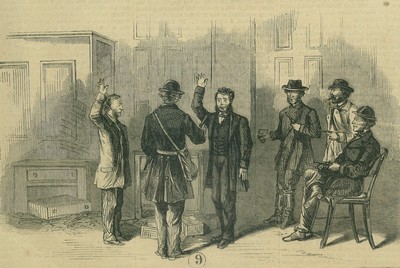
In October 1864, a score of young men drifted into St. Albans, a little Vermont town just south of the Canadian border. They arrived in small groups by train and coach, took rooms in local hotels, and began to pass time around town, observing the daily routines of the citizens.
On October 19, they simultaneously held up three local banks. There they revealed themselves to be Confederate soldiers, and as they collected the money they required the bank officers to take an oath of fealty to the South. Then they made off across the border. “They must have either had a guide who was acquainted with the road or had made a personal examination,” wrote one investigator, “because there were places in the road where strangers would have gone the wrong way, but they made no mistake.”
In all, the raiders made off with $208,000, about $3.2 million in today’s dollars. They were apprehended, but the Canadian authorities refused to extradite them, and their leader, Bennett Young, traveled in Europe until it was safe to return to Kentucky after the war. His exploit became the northernmost land action in the Civil War.
